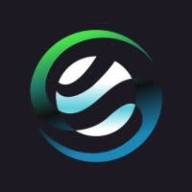

Morphisec and Microsoft Defender for Endpoint compete in the endpoint security category. Morphisec leads in pricing and support, while Microsoft Defender for Endpoint has an edge in features.
Features: Morphisec is known for its lightweight agent, minimal system impact, and suitability for small to mid-sized environments. Microsoft Defender for Endpoint offers a broad range of threat detection capabilities, better integration with Microsoft environments, and is preferred for large-scale deployments.
Room for Improvement: Users of Morphisec suggest enhancements in advanced threat intelligence, expanded reporting, and possibly more scalability features. Users of Microsoft Defender for Endpoint see a need for performance optimization, lower false positives, and a more user-friendly interface.
Ease of Deployment and Customer Service: Morphisec is highlighted for its straightforward deployment process and responsive customer support. Microsoft Defender for Endpoint's deployment is more complex due to its extensive feature set, but users value the comprehensive documentation and strong support channels.
Pricing and ROI: Morphisec is considered cost-effective with a quick setup process, providing high ROI for smaller organizations. Microsoft Defender for Endpoint, though pricier, is justified by its advanced features and extensive protection capabilities, resulting in substantial ROI for larger enterprises.
| Product | Market Share (%) |
|---|---|
| Microsoft Defender for Endpoint | 9.9% |
| Morphisec | 0.5% |
| Other | 89.6% |


| Company Size | Count |
|---|---|
| Small Business | 79 |
| Midsize Enterprise | 34 |
| Large Enterprise | 87 |
| Company Size | Count |
|---|---|
| Small Business | 5 |
| Midsize Enterprise | 8 |
| Large Enterprise | 8 |
Microsoft Defender for Endpoint is a comprehensive security solution that provides advanced threat protection for organizations. It offers real-time protection against various types of cyber threats, including malware, viruses, ransomware, and phishing attacks.
With its powerful machine-learning capabilities, it can detect and block sophisticated attacks before they can cause any harm. The solution also includes endpoint detection and response (EDR) capabilities, allowing organizations to quickly investigate and respond to security incidents. It provides detailed insights into the attack timeline, enabling security teams to understand the scope and impact of an incident.
Microsoft Defender for Endpoint also offers proactive threat hunting, allowing organizations to proactively search for and identify potential threats within their network. It integrates seamlessly with other Microsoft security solutions, such as Microsoft Defender XDR, to provide a unified and holistic security approach. With its centralized management console, organizations can easily deploy, configure, and monitor the security solution across their entire network.
Microsoft Defender for Endpoint is a robust and scalable security solution that helps organizations protect their endpoints and data from evolving cyber threats.
Morphisec integrates seamlessly with platforms like Microsoft Defender, offering signatureless protection against zero-day threats and ransomware. It enhances existing endpoint solutions with minimal maintenance through its set-and-forget deployment, providing heightened security and reduced false positives.
Morphisec strengthens defense strategies by merging memory morphing and signatureless protection to effectively block zero-day attacks and ransomware. It operates efficiently within existing infrastructure, reducing system impact and maintenance needs. Users find its full visibility dashboard invaluable. Despite its strengths, cloud deployment and reporting features can be improved. Stability, alerts, and integration with other systems pose challenges for users, impacting usability and support quality.
What are Morphisec's key features?
What benefits should users consider in reviews?
In security-focused industries, Morphisec is crucial for protecting workstations and servers against sophisticated attacks like ransomware. Its signatureless technology offers early threat detection, while compatibility with existing systems ensures seamless integration, providing advanced protection without additional licensing costs.
We monitor all Endpoint Protection Platform (EPP) reviews to prevent fraudulent reviews and keep review quality high. We do not post reviews by company employees or direct competitors. We validate each review for authenticity via cross-reference with LinkedIn, and personal follow-up with the reviewer when necessary.